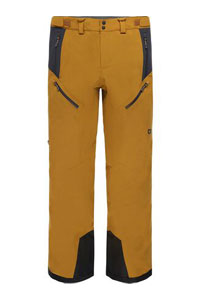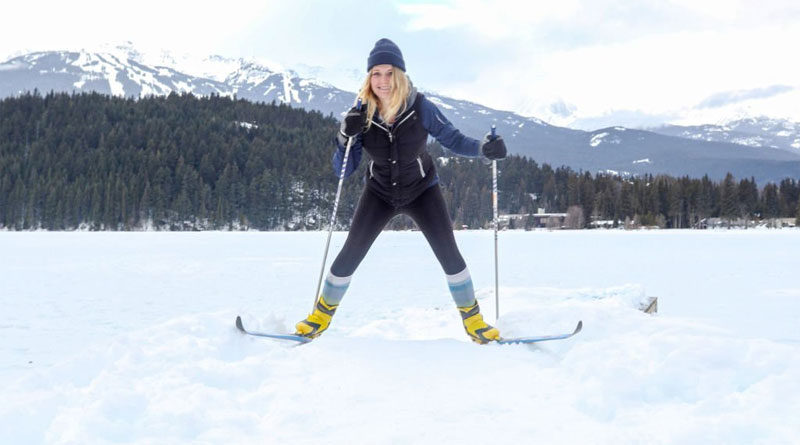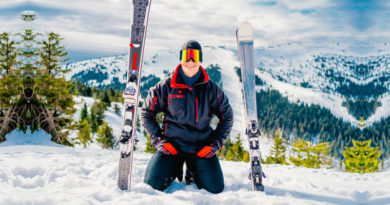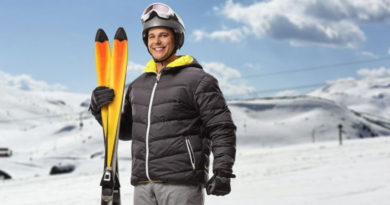Can You Ski In Leggings?
Skiing in leggings is not recommended as most leggings are cotton or a cotton blend. It’s a well-known fact that cotton is the worst material when it comes to outdoor adventures. The reason behind this is that cotton absorbs a lot of moisture (usually sweat) and takes a long time to dry. With this property of cotton, you can’t stay dry and warm. It makes you cold and uncomfortable. The situation even gets worse when rain happens. The leggings become heavy and start to rub against your skin.
Leggings also don’t keep you warm because they lack insulation. They also lack wind-blocking properties and you will be getting cold quickly on the slopes with just a pair of leggings. Without a proper pair of ski pants, it’s challenging to keep your legs warm. Finally, it’s rare to see people skiing in leggings. So when you are skiing in leggings, it looks like you are an idiot and have no idea what you are doing.
Some exceptions
Leggings made with polyester, nylon, and merino wool can be used as a base layer. They provide good moisture-wicking properties and keep your leg warm. Keep in mind that you only need a base layer with non-insulated ski pants. Some ski pants come with built-in insulation and if you wear a base layer with insulated pants, it can become too warm. Also, the base layer underneath your pants should not be too tight as it will restrict your movement. Finally, leggings with all of these technical features are still not suitable for standalone use. They still lack the critical features that dedicated ski pants offer. More on ski pants features coming below.
So what to wear?
So, if leggings are not suitable for skiing, what should you wear on the slopes? Well, a good pair of dedicated ski pants is always recommended. These pants are purpose-built and it’s the only way to get the most out of your ski adventures. These pants provide a lot of snow-specific features that are critical for snow adventures. These features include but are not limited to pockets, vents, belt loops, snow gaiter attachment points, and RECCO. However, if you don’t have a pair of dedicated ski pants and you still want to ski, there are some great alternatives to ski pants available (other than leggings) that will get the job done.
Why ski pants are important?
A pair of dedicated ski pants are essential for a successful day in the mountains. These pants provide features that are critical for your safety on the slopes. A good pair of ski pants should provide the following features:
- Pockets: A couple of zippered pockets can be a good place to fit snacks or other personal belongings. Some ski pants feature a dedicated ski pass pocket, which is a good feature.
- Waterproofing: A pair of ski pants should provide good water resistance and it is an absolute must. That’s because your pants come in contact with snow frequently. Some good waterproof membranes include Gore-Tex, eVent, and NeoShell.
- Breathability: To reduce sweat build-up, your pants should provide good breathability. Gore-Tex is a good example of a waterproof and breathable membrane but it’s found only in high-end ski pants.
- Vents: Zippered vents are also helpful and they aid breathability. You can open or close vents according to your needs. Vents are commonly found on the thighs of ski pants. They are equivalent to pit zips found in your ski jacket.
- RECCO: This feature is only found in mid to high-range ski pants. It’s a safety feature for skiers that make their way out of bounds. It’s a reflector that is built into your ski jacket or pants and it cannot be picked up by RECCO detectors.
You can ski without these features but it’s always a good idea to have these features in your pants so you can enjoy your time with good comfort and safety.
Outdoor Research Skyward II: Best Ski Pants

Type: Hardshell
Insulated: No
Fabric: Nylon, Polyester, Spandex
Best Use: Resort and Backcountry
Outdoor Research Skyward II pants strike a good balance between price, design, and features. It offers a 3-layer construction with stretchy fabrics for mobility. The pants offer good temperature regulation and solid weather protection. The in-house AscentShell build will keep you comfortable and protected in a wide range of weather conditions. This in-house AscentShell is not as good as Gore-Tex but it will still keep you dry and cozy. These pants are built well enough to seal out elements. The zippers are also water-resistant and with no leakage issues. The outer shell also has a DWR coating that can repel snow, rain, and sleet.
Talking about comfort, the fabric has 12% spandex, which makes it impressively mobile and comfortable. The fabric moves with you and it doesn’t feel restrictive. Additionally, the tricot-lined waistband offers great next-to-skin comfort. However, the pants do not offer built-in insulation. So, if you run cold easily or you are planning to ski in temperatures below around -5°F, I’d suggest adding a warm base layer underneath. Finally, these pants offer all the essential snow-specific features like vents, pockets, internal gaiters, etc. These can be the go-to ski pants that you can use for the resort as well as backcountry skiing.
What I like: Stretchy and comfortable fabric, solid weather protection, versatile for both backcountry and resort use
What I don’t: The in-house AscentShell membrane is not as good as Gore-Tex.
See the Outdoor Research Skyward II See the Women’s Skyward II
Conclusion
So in conclusion, a pair of leggings is not suitable for skiing as most of these are made of cotton. We all know that cotton doesn’t perform well when it comes to outdoor activities. That is because cotton absorbs water and takes longer to dry. This property of cotton makes it less suitable for outdoor wear. Nylon and polyester leggings are an exception and they can be used as a base layer under a pair of ski pants. A good pair of ski pants is always recommended for an enjoyable ski experience. These pants provide features like waterproofing, breathability, vents, and pockets that are critical on the slopes.




